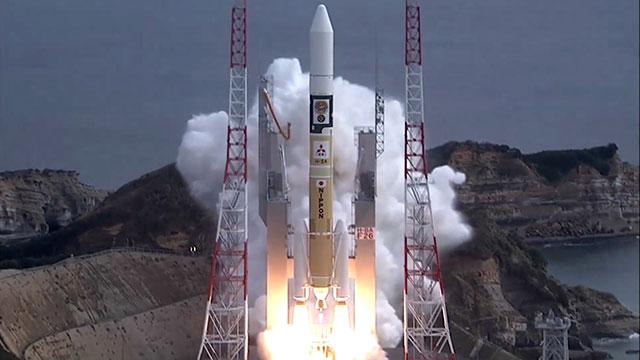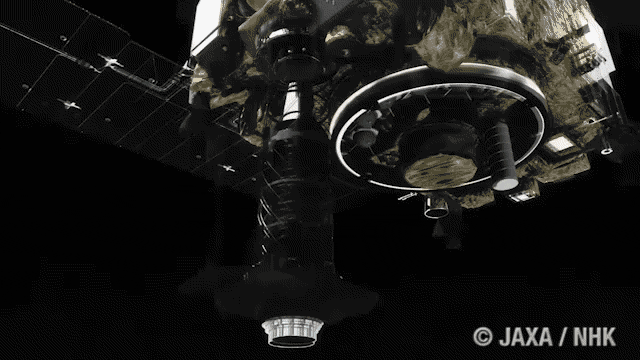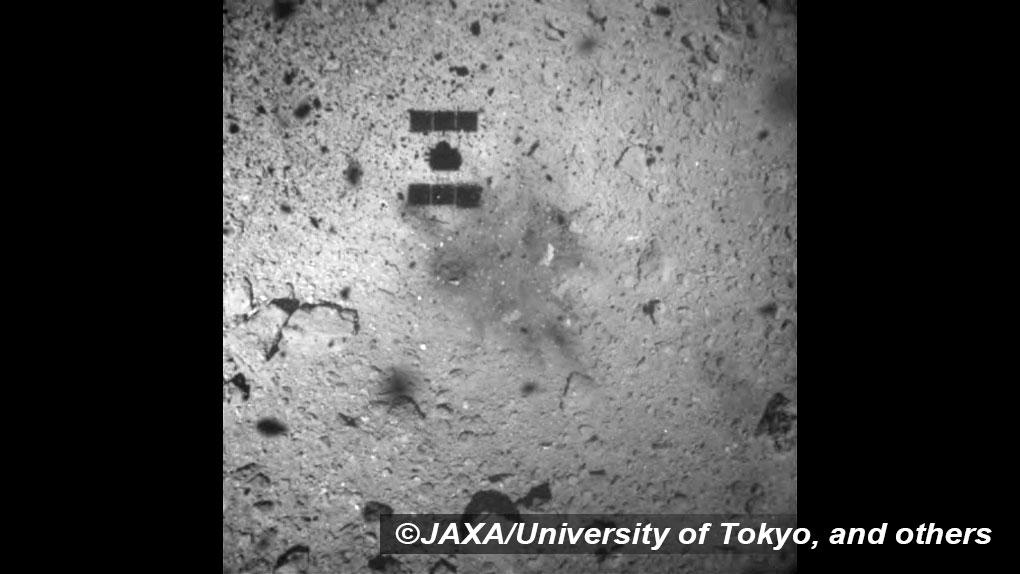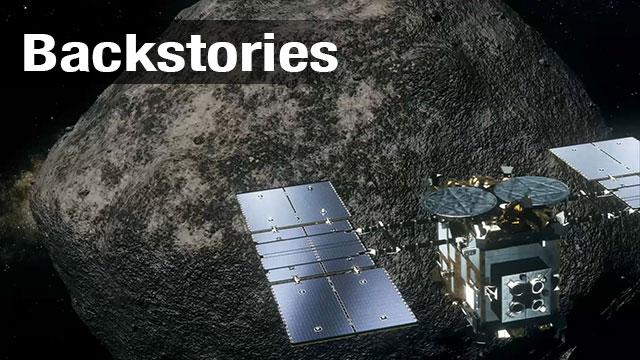1. Origins of the solar system
Hayabusa2 was developed by the Japan Aerospace Exploration Agency, or JAXA, and launched in December 2014. Its destination was Ryugu, an asteroid orbiting the sun between the earth and Mars some 300 million kilometers from us.
It's thought water and organic material from the time the solar system was born 4.6 billion years ago may still exist there. Scientists have likened Ryugu to a fossil containing memories from that time. After landing on the surface of Ryugu, the next stage of the mission is to collect rock samples from the asteroid.
The original Hayabusa was the first spacecraft to bring back samples from an asteroid, in 2010. After sustaining damage during touchdown, there were fears the mission would fail.

2. Lessons learned from original Hayabusa
Hayabusa2 features a rock-collecting device about a meter long that emerges from underneath the probe and comes into contact with the asteroid. It is designed to fire projectiles into the surface and gather the material that this exposes.
JAXA incorporated a backup plan to scoop up small rocks if the projectile mechanism fails. The team also practiced collecting samples on a replica of the asteroid's surface back on earth.
But there were still obstacles to overcome. Last June, when Hayabusa2 reached Ryugu, researchers spotted a problem.
The surface of the asteroid was too rocky. That meant there was very little room to land, so JAXA had to figure out where and how the probe could touch down safely.
It chose a landing spot about six meters in diameter and with no rocks bigger than 60 centimeters across.
Makoto Yoshikawa, Hayabusa2 mission manager at JAXA, says: "At the beginning, we thought we were landing in a baseball stadium. Actually, we had to land on the pitcher's mound within the stadium."

3. So far, so good
During its descent toward Ryugu, Hayabusa2 switched to autonomous landing mode about 500 meters above the surface. It then used sensors to calculate its position and maneuver to the landing site.
JAXA received a signal on February 22nd that said Hayabusa2 had touched down on Ryugu at around 7:30 AM Japan Time and was already collecting samples.
Seiji Sugita of the University of Tokyo and also a member of the Hayabusa2 team explains that an image sent back by the spacecraft shows small black blotches. Those are the shadows of pebbles disturbed by the first projectile, which had fired as planned.
Sugita says that means Hayabusa2 has directly interacted with the asteroid's surface and that it seems certain to have captured multiple samples already.

4. International plaudits
Japan's science minister Masahiko Shibayama said that the Hayabusa2 mission is attracting significant attention around the world. He praised JAXA for demonstrating Japan's technological prowess to the world.
And the head of NASA tweeted congratulations on the "successful touchdown and retrieval" by Hayabusa2.
Brian May of Queen and also an astronomer described himself as "hugely happy to be... part of the Hayabusa family."
5. What's next for Hayabusa2?
JAXA says Hayabusa2 is scheduled to visit one or two more landing sites on Ryugu before July.
One will see the use of a device called an impactor to create a crater-like hole on the surface -- the first experiment of its kind. JAXA plans to have Hayabusa2 land there to collect rock samples from inside the asteroid. That should reveal more about Ryugu, including the hardness of its surface.
Finally, Hayabusa2 will end its long mission by returning to earth toward the end of 2020.

